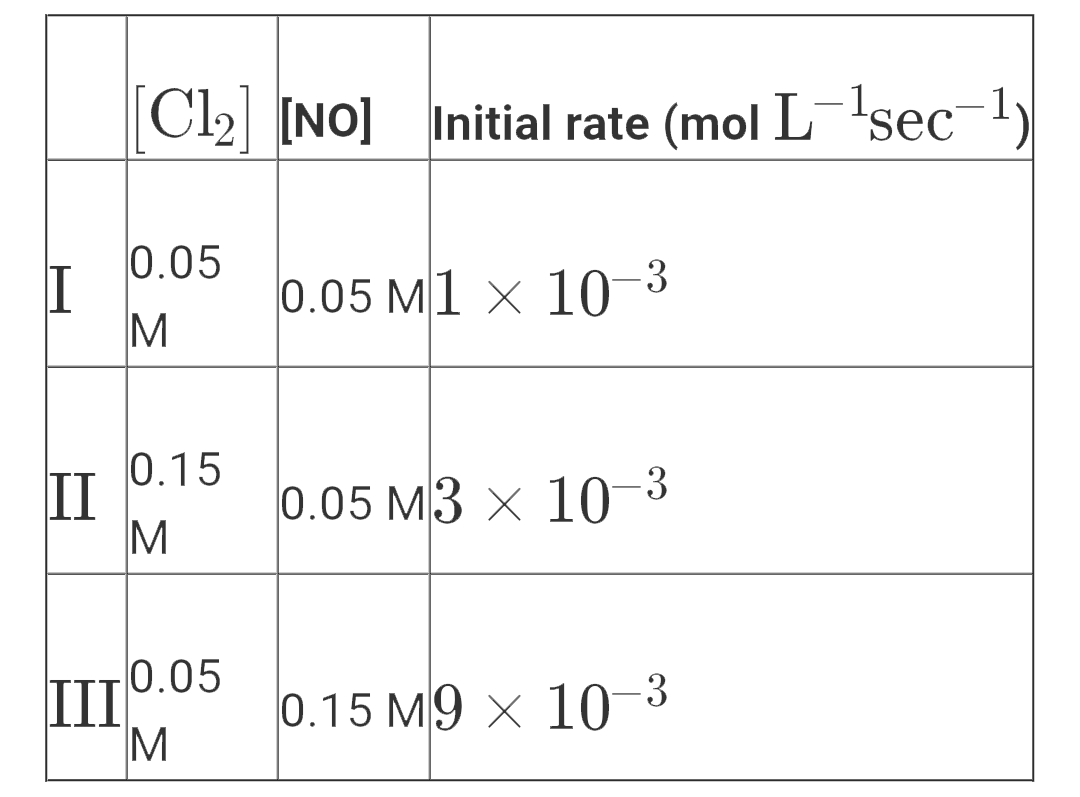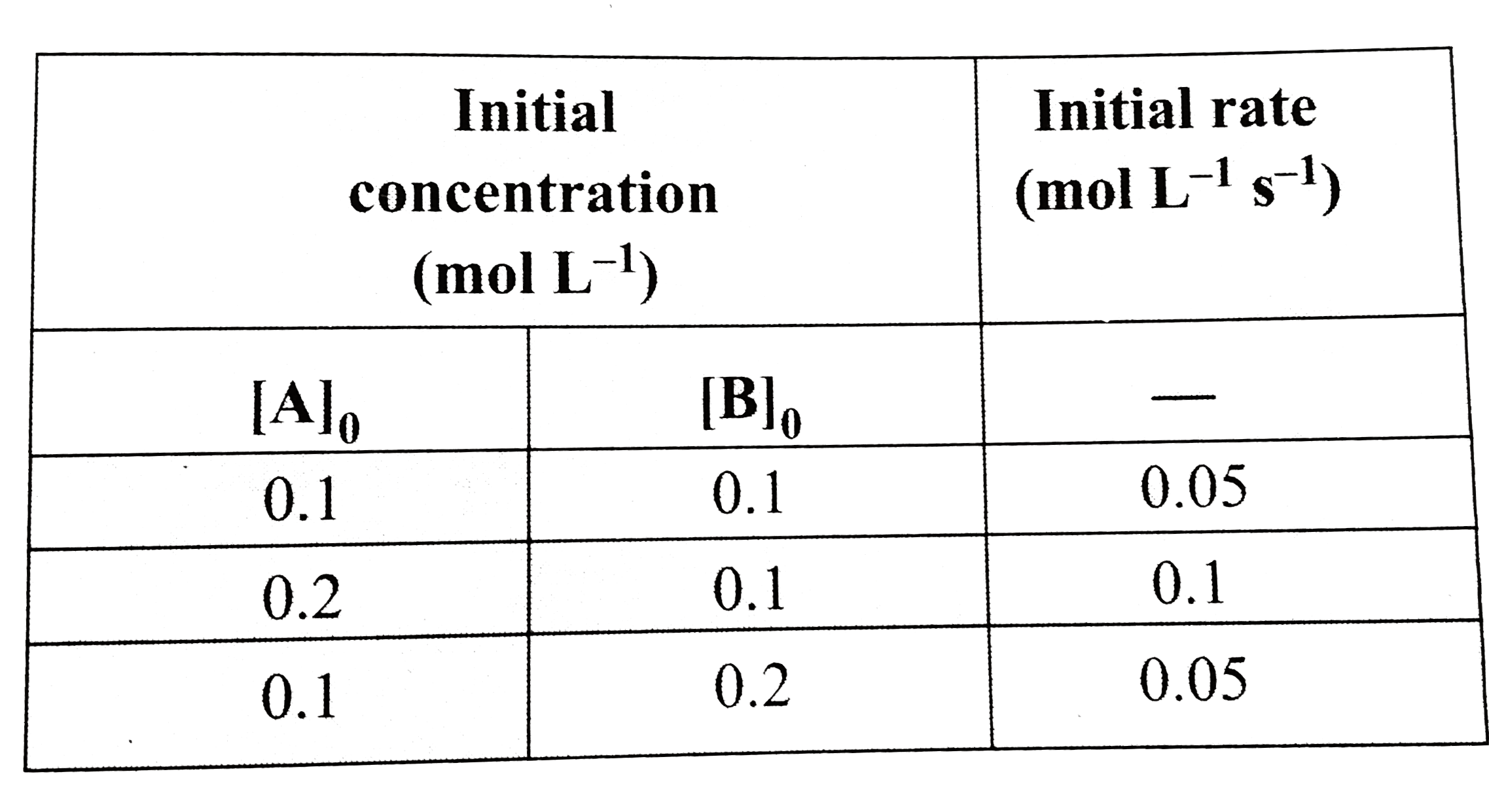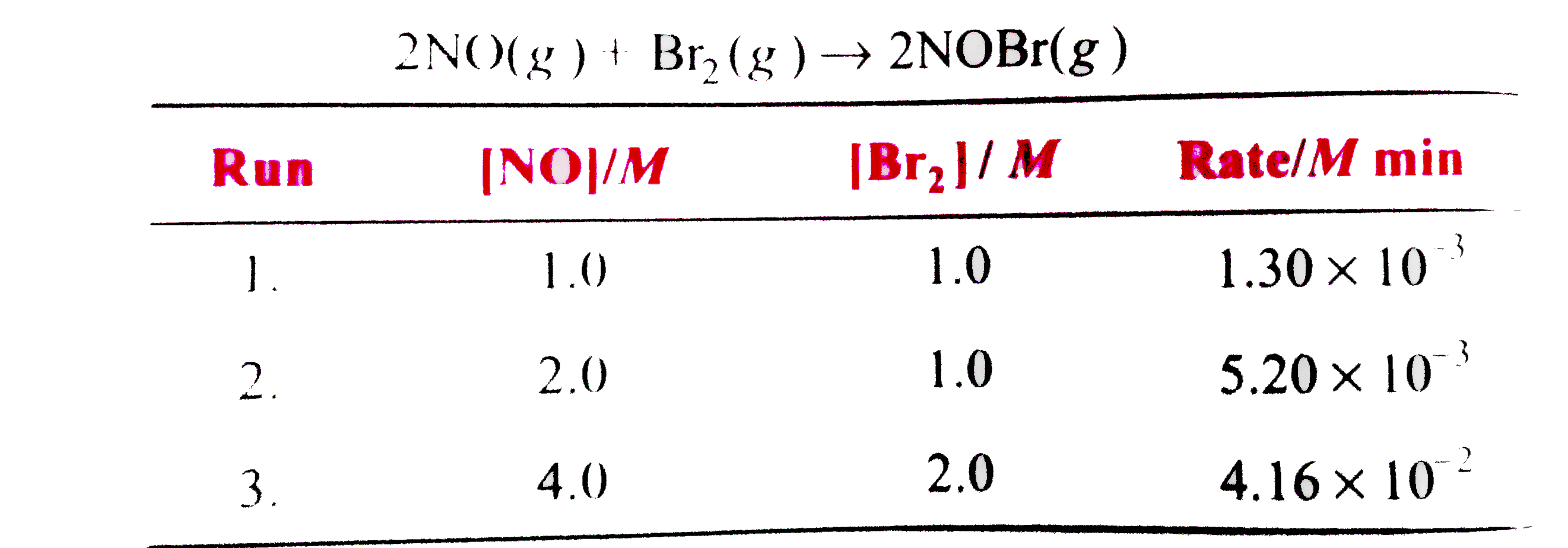The three experimental data for determine the differential rate of reactiobn 2NO(g)+Cl(g)→2BOCl(g) at definate temprerature are given below.

(a)Derive differential rate of reaction
(b)Calculate order of reaction
(iii)Calculate value of rate constant.
Text Solution
(a)−d[Cl2]dt=−d[NO]dt=kd[NO]dt=k[NO]2[Cl2]l
(b)Order of reaction =2+1=3
(c )175 L2mol−2S−1]
|
Topper's Solved these Questions
- CHEMICAL KINETICSBOOK - KUMAR PRAKASHANCHAPTER - CHEMICAL KINETICSEXERCISE - Section -A (Questions)
11 Videos
- CHEMICAL KINETICSBOOK - KUMAR PRAKASHANCHAPTER - CHEMICAL KINETICSEXERCISE - Section-B-(INTEXT QUESTIONS AND ANSWERS )
9 Videos
- CHEMICAL KINETICSBOOK - KUMAR PRAKASHANCHAPTER - CHEMICAL KINETICSEXERCISE - Section-A - Problem
1 Videos
- BOARD EXAM QUESTION PAPER MARCH - 2020 BOOK - KUMAR PRAKASHANCHAPTER - BOARD EXAM QUESTION PAPER MARCH - 2020 EXERCISE - PART -B
23 Videos
- CHEMISTRY IN EVERYDAY LIFEBOOK - KUMAR PRAKASHANCHAPTER - CHEMISTRY IN EVERYDAY LIFEEXERCISE - SECTION - E (MCQs ASKED IN GUJCET/BOARD EXAM)
37 Videos
Similar Questions
Knowledge Check
The given data are for the reaction, 2NO(g)+Cl(g)→2NOCl(g) at 298K

The rate law of the reactions isArate =k[NO][Cl2]Brate =k[Cl2][NO]2Crate =k[Cl2]2[NO]Drate =k[Cl2]In the following reaction:
2NO(g)+Cl2(g)⇔2NOCl(g)
it is observed that equilibrium is not attained and the rate of forward reaction is greater than rate of backward reaction. Which of the following is true for the reaction ?AKp=QpBQp>KpCQp<KpDQp=0Concentration dependence of rate is called differential rate equation. Integrated differential equations give relation between directly measured experimental data i.e., concentration at different times and rate constant. The integrated rate equations are different for the reactions of differennt reaction orders. the first-order reaction has a rate constant 1.15×10−3s−1.
Q. How long will 5g of this reactant take to reduce to 3g?A222.189B444.379sC111.095sD888.789s
For the given reaction, A+B→ Products Following data are given

(a) Write the rate equation
(b) Calculate the rate constant
View SolutionFor the given reaction
A+B→ Products,
the following data are given.

(a) Write the rate equation.
(b) Calculate the rate constant.
View SolutionFor the given reaction
A+B→ Products,
the following data are given.

(a) Write the rate equation.
(b) Calculate the rate constant.
View SolutionThe following initial rate data were obtianed for the reaction
2NOg+Br(g)→2NOBr(g)

Determine the reaction rat law and the value of te rate constant.
View SolutionFor the reaction Cl2(g)+2NO(g)→2NOCI(g) the rate law is expressed as: rate=k[Cl2][NO]2 What is the overall order of this reaction ?
View Solution
